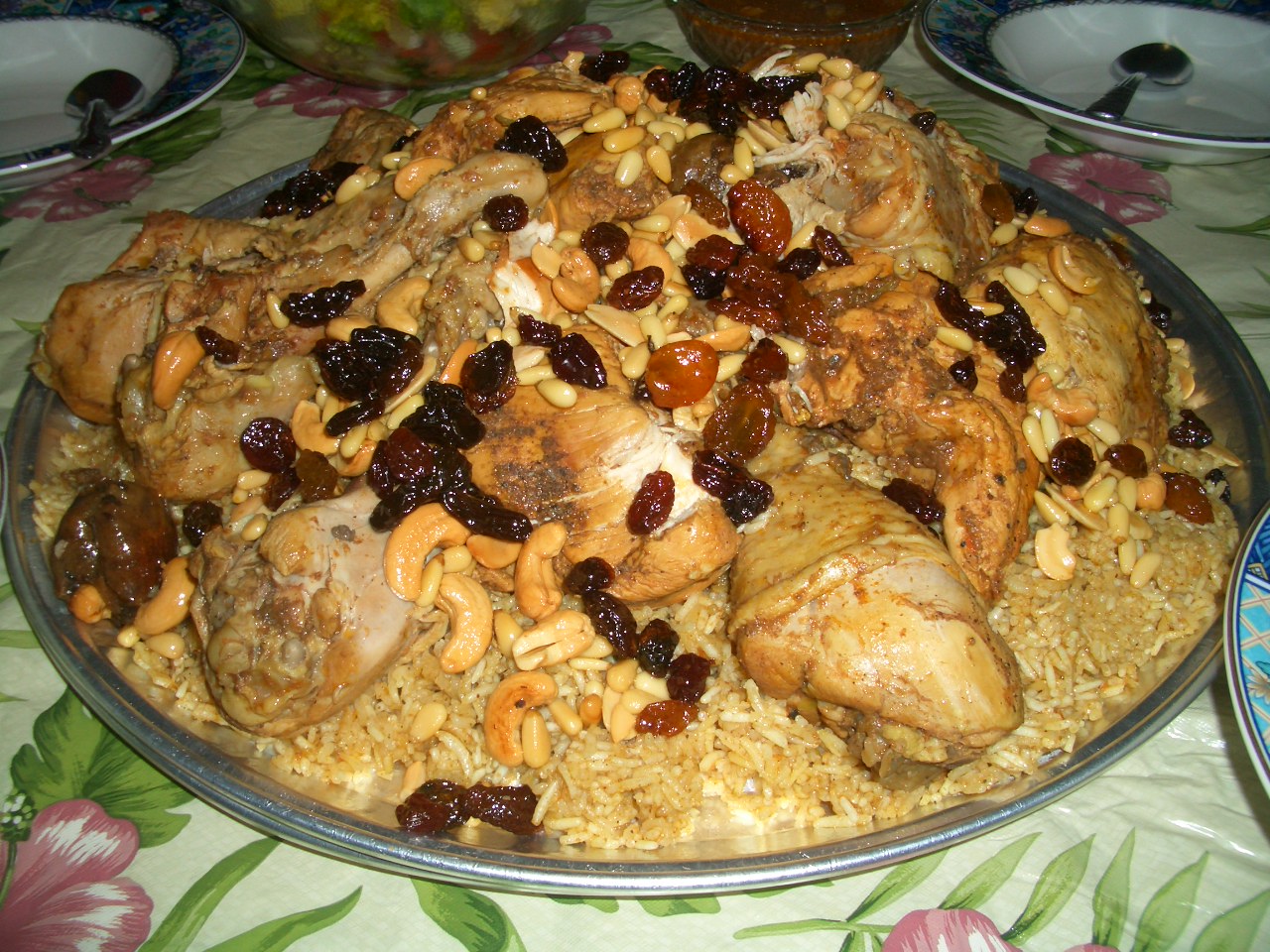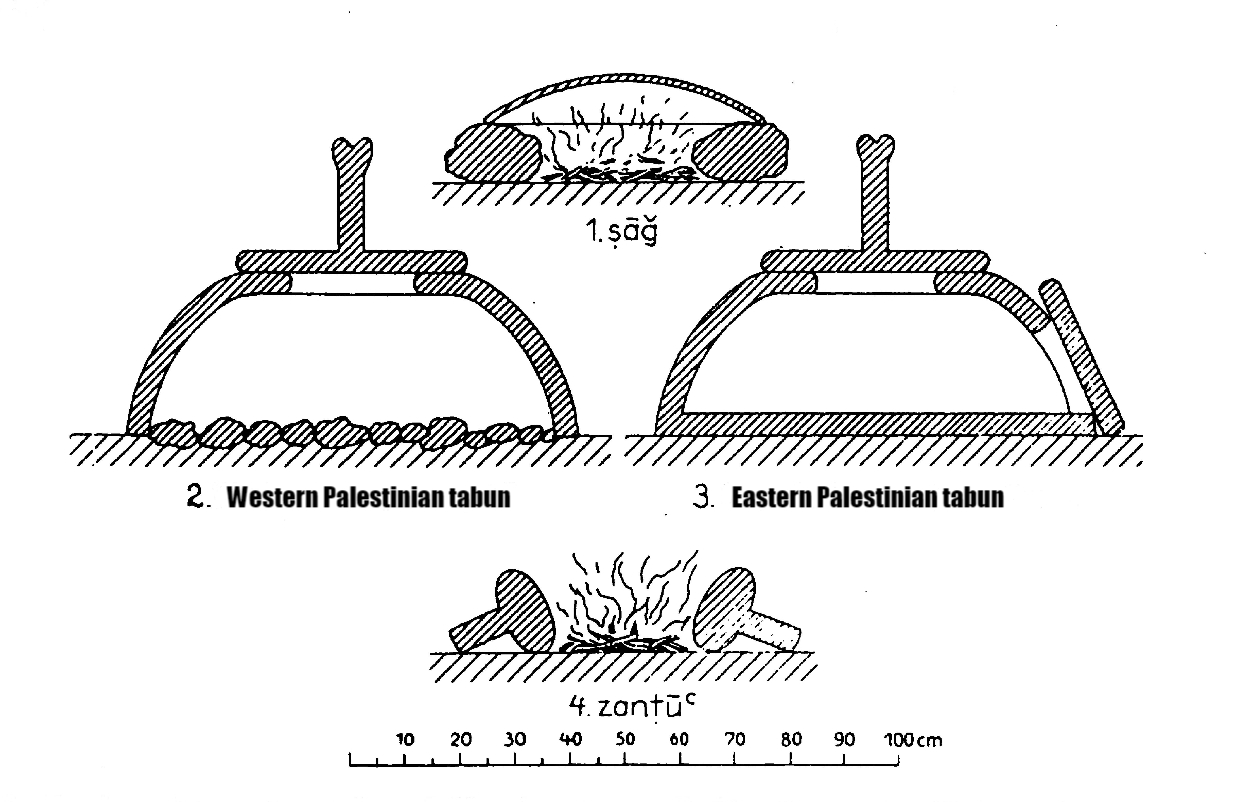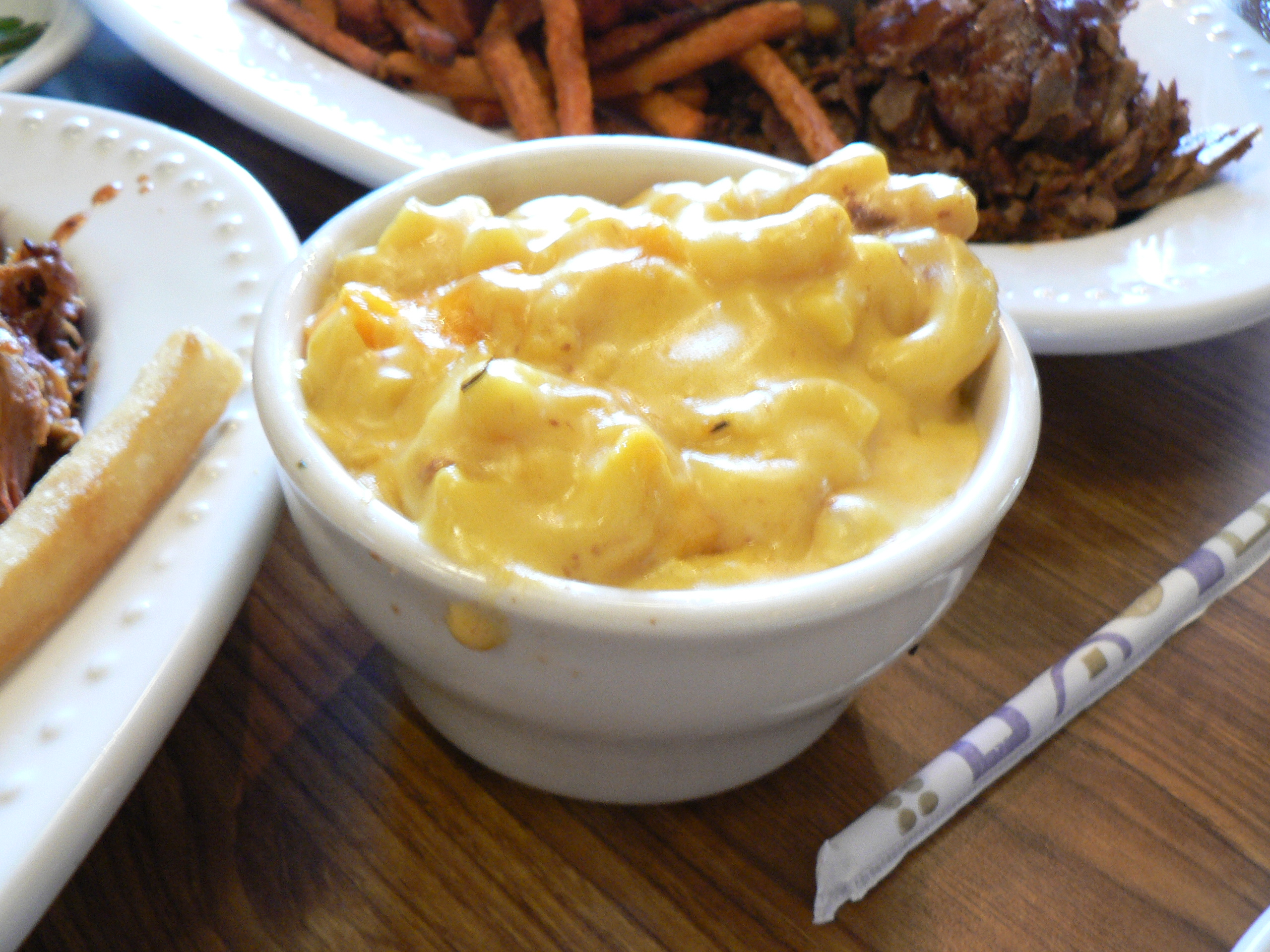|
Maryam's Bread
Maryam's Bread () (lit. Mary's Bread), also known as Yellow Bread () is a traditional Eastern Arabian flatbread originating from Qatif, Saudi Arabia. The bread is notable for its golden color, use of date molasses, and its cultural significance in both Islamic and pre-Islamic traditions. Though its exact historical evolution remains undocumented, historical scholars suggest its origins may trace back approximately 2,000 years to the Nestorian Christian era in Qatif, predating Islam.Al-Durura, Ali (2000). Jawānib min al-turāth al-shaʻbī fī al-Qatif. Dar al-Mahajja al-Bayda'. History While the exact timeline of its development remains unclear, it is believed that Maryam's Bread may have originated during the Nestorian Christian period in Qatif, approximately 2,000 years ago. The tradition of its preparation has been preserved through generations of local families, particularly in Qatif.{{Cite web , date=2022-01-15 , title=خبز مريم .. لونه الأسمر ربطه ب ... [...More Info...] [...Related Items...] OR: [Wikipedia] [Google] [Baidu] |
Flatbread
A flatbread is bread made usually with flour; water, milk, yogurt, or other liquid; and salt, and then thoroughly rolled into flattened dough. Many flatbreads are Unleavened bread, unleavened, although some are leavened, such as pita bread. A Serving size, serving of 85g (~3 ounces) of pita bread has 234 Calorie, calories. Flatbreads range from below one millimeter to a few centimeters thick so that they can be easily eaten without being sliced. They can be baked in an oven, fried in hot oil, grilled over hot coals, cooked on a hot pan, tava, Comal (cookware), comal, or metal griddle, and eaten fresh or packaged and frozen for later use. History Flatbreads were amongst the earliest food processing, processed foods, and evidence of their production has been found at ancient sites in Mesopotamia, ancient Egypt, and the Indus Valley Civilisation, Indus civilization. The origin of all flatbread baking systems are said to be from the Fertile Crescent in West Asia, where they would su ... [...More Info...] [...Related Items...] OR: [Wikipedia] [Google] [Baidu] |
Islamic Calendar
The Hijri calendar (), also known in English as the Islamic calendar, is a lunar calendar consisting of 12 lunar months in a year of 354 or 355 days. It is used to determine the proper days of Islamic holidays and rituals, such as the Ramadan, annual fasting and the annual season for the Hajj, great pilgrimage. In almost all countries where the predominant religion is Islam, the civil calendar is the Gregorian calendar, with Assyrian calendar, Syriac month-names used in the Arabic names of calendar months#Levant and Mesopotamia, Levant and Mesopotamia (Iraq, Syria, Jordan, Lebanon and Palestine), but the religious calendar is the Hijri one. This calendar enumerates the Hijri era, whose Epoch (reference date), epoch was established as the Islamic New Year in 622 Common Era, CE. During that year, Muhammad and his followers migrated from Mecca to Medina and established the first Muslim community (''ummah''), an event commemorated as the Hijrah. In the West, dates in this era ar ... [...More Info...] [...Related Items...] OR: [Wikipedia] [Google] [Baidu] |
Saudi Arabian Cuisine
Saudi Arabian cuisine (Arabic language, Arabic: المطبخ العربي السعودي) is the cooking styles and dishes of Saudi Arabia. Varying throughout the diverse landscapes and regions of the country, the Environmental law, environmental, Geographic coordinate system, geographic, and Culture, cultural differences have led to a wide variety of dishes. Saudi Arabia encompasses different regions, resulting in cuisines from the Central region, Eastern, Southern and Western regions. Furthermore, Saudi Arabia's position along global trade routes has led to the introduction of various spices. Cooking in Saudi Arabia is influenced by the native Arab culture, Arab and the Islamic culture. Date palm, Dates, for example, are associated with the tradition of Iftar, breaking the fast after Ramadan. Most food ingredients, such as wheat, dates, ghee, meat, fish and vegetables, are sourced locally. Through these ingredients, dozens of delicious dishes have been created, which are closely ... [...More Info...] [...Related Items...] OR: [Wikipedia] [Google] [Baidu] |
Arab Breads
Arabs (, , ; , , ) are an ethnic group mainly inhabiting the Arab world in West Asia and North Africa. A significant Arab diaspora is present in various parts of the world. Arabs have been in the Fertile Crescent for thousands of years. In the 9th century BCE, the Assyrians made written references to Arabs as inhabitants of the Levant, Mesopotamia, and Arabia. Throughout the Ancient Near East, Arabs established influential civilizations starting from 3000 BCE onwards, such as Dilmun, Gerrha, and Magan (civilization), Magan, playing a vital role in trade between Mesopotamia, and the History of the Mediterranean region, Mediterranean. Other prominent tribes include Midian, ʿĀd, and Thamud mentioned in the Hebrew Bible, Bible and Quran. Later, in 900 BCE, the Qedarites enjoyed close relations with the nearby Canaan#Canaanites, Canaanite and Aramaeans, Aramaean states, and their territory extended from Lower Egypt to the Southern Levant. From 1200 BCE to 110 BCE, powerful ... [...More Info...] [...Related Items...] OR: [Wikipedia] [Google] [Baidu] |
Nigella Sativa
''Nigella sativa'' (common names, black caraway, black cumin, nigella or kalonji) is an annual flowering plant in the family Ranunculaceae, native to western Asia (Arabia, the Levant, Cyprus, Turkey, Iran and Iraq), and eastern Europe (Bulgaria and Romania). It is naturalized over parts of Europe, northern Africa, and east to Myanmar. It is used as a spice in various food preparations, especially in Arab and Halal cuisines. Etymology The genus name ''Nigella'' is a diminutive of the Latin "black", referring to the seed color. The specific epithet ''sativa'' means "cultivated". Common names In food preparation, ''Nigella sativa'' and its seeds are variously called black caraway, black seed, black cumin, fennel flower, nigella, nutmeg flower, Roman coriander, or black onion seed. Black seed and black caraway may also refer to '' Elwendia persica'', which is also known as ''Bunium persicum''. Description ''N. sativa'' grows to tall, with finely divided, linear (but not thread ... [...More Info...] [...Related Items...] OR: [Wikipedia] [Google] [Baidu] |
Sesame
Sesame (; ''Sesamum indicum'') is a plant in the genus '' Sesamum'', also called benne. Numerous wild relatives occur in Africa and a smaller number in India. It is widely naturalized in tropical regions around the world and is cultivated for its edible seeds, which grow in pods. World production in 2018 was , with Sudan, Myanmar, and India as the largest producers. Sesame seed is one of the oldest oilseed crops known, domesticated well over 3,000 years ago. ''Sesamum'' has many other species, most being wild and native to sub-Saharan Africa. ''S. indicum,'' the cultivated type, originated in India. It tolerates drought conditions well, growing where other crops fail. Sesame has one of the highest oil contents of any seed. With a rich, nutty flavor, it is a common ingredient in cuisines around the world. Like other foods, it can trigger allergic reactions in some people and is one of the nine most common allergens outlined by the Food and Drug Administration. Etymology Th ... [...More Info...] [...Related Items...] OR: [Wikipedia] [Google] [Baidu] |
Yeast
Yeasts are eukaryotic, single-celled microorganisms classified as members of the fungus kingdom (biology), kingdom. The first yeast originated hundreds of millions of years ago, and at least 1,500 species are currently recognized. They are estimated to constitute 1% of all described fungal species. Some yeast species have the ability to develop multicellular characteristics by forming strings of connected budding cells known as pseudohyphae or false hyphae, or quickly evolve into a Multicellular organism, multicellular cluster with specialised Organelle, cell organelles function. Yeast sizes vary greatly, depending on species and environment, typically measuring 3–4 micrometre, μm in diameter, although some yeasts can grow to 40 μm in size. Most yeasts reproduce asexual reproduction, asexually by mitosis, and many do so by the asymmetric division process known as budding. With their single-celled growth habit, yeasts can be contrasted with Mold (fungus), molds, wh ... [...More Info...] [...Related Items...] OR: [Wikipedia] [Google] [Baidu] |
Wheat Flour
Wheat flour is a powder made from the grinding of common wheat used for human consumption. Wheat varieties are called "soft" or "weak" if gluten content is low, and are called "hard" or "strong" if they have high gluten content. Hard flour, or ''bread flour'', is high in gluten, with 12% to 14% gluten content, and its dough has elastic toughness that holds its shape well once baked. Soft flour is comparatively low in gluten and thus results in a loaf with a finer, crumbly texture. Soft flour is usually divided into cake flour, which is the lowest in gluten, and pastry flour, which has slightly more gluten than cake flour. In terms of the parts of the grain (the grass fruit) used in flour—the endosperm or protein/starchy part, the germ or protein/fat/vitamin-rich part, and the bran or fiber part—there are three general types of flour. White flour is made from the endosperm only. Brown flour includes some of the grain's germ and bran, while whole grain or ''wholemeal flour' ... [...More Info...] [...Related Items...] OR: [Wikipedia] [Google] [Baidu] |
Clay Oven
The primitive clay oven, or earthen oven / cob oven, has been used since ancient times by diverse cultures and societies, primarily for, but not exclusive to, baking before the invention of cast-iron stoves, and gas and electric ovens. The general build and shape of clay ovens were, mostly, common to all peoples, with only slight variations in sizeMaimonides (1967), p. 46 (Seder Taharot), s.v. ''Keilim'' 5:1. and in materials used to construct the oven. In primitive courtyards and farmhouses, earthen ovens were built on the ground. In Arabian, Middle Eastern and North African societies, bread was often baked within a clay oven called in some Arabic dialects a ''Tabun oven, tabun'' (also Transliteration, transliterated ''taboon'', from the ), or else in a clay oven called a ''tannour'', and in other dialects ''mas'ad''. The clay oven, synonymous with the Hebrew word ''tannour'', lit. 'oven', was shaped like a truncated cone (geometry), cone, with an opening either at the top or b ... [...More Info...] [...Related Items...] OR: [Wikipedia] [Google] [Baidu] |
Dough
Dough is a malleable, sometimes elastic paste made from flour (which itself is made from grains or from leguminous or chestnut crops). Dough is typically made by mixing flour with a small amount of water or other liquid and sometimes includes yeast or other leavening agents, as well as ingredients such as fats or flavourings. Making and shaping dough begins the preparation of a wide variety of foodstuffs, particularly breads and bread-based items, but also including biscuits, cakes, cookies, dumplings, flatbreads, noodles, pasta, pastry, pizza, piecrusts, and similar items. Dough can be made from a wide variety of flour, commonly wheat and rye but also maize, rice, legumes, almonds, and other cereals or crops. Types of dough Doughs vary widely and may be ''enriched'' with eggs, sugars, spices, and fats. With respect to enrichment, the dough are forming a spectrum with two extremes: * lean dough contains mostly the basic ingredients (flour, water, salt, and, ... [...More Info...] [...Related Items...] OR: [Wikipedia] [Google] [Baidu] |
Safar
Safar (), also spelt as Safer in Turkish, is the second month of the lunar Islamic calendar. Most of the Islamic months were named according to ancient Sabean/Sabaic weather conditions; however, since the calendar is lunar, the months shift by about 11 days every solar year, meaning that these conditions do not necessarily correspond to the name of the month. Timing The Islamic calendar is a purely lunar calendar, and its months begin when the first crescent of a new moon is sighted. Since the Islamic lunar year is 11 to 12 days shorter than the solar year, Safar migrates throughout the seasons. The estimated start and end dates for Safar are as follows (based on the Umm al-Qura calendar of Saudi Arabia): Islamic events * 01 Safar 61 AH, prisoners of Karbalā entered Yazid's Palace in Syria * 10 Safar 61 AH, death of Sakina bint Husayn, youngest daughter of Hussain ibn Ali and a prisoner of Karbalā * 17 Safar 202 AH, martyrdom of Ali al-Ridha according to one t ... [...More Info...] [...Related Items...] OR: [Wikipedia] [Google] [Baidu] |
Side Dish
A side dish, sometimes referred to as a side order, side item, or simply a side, is a food item that accompanies the entrée or main course at a meal. (definition. Merriam-webster.com Accessed August 2011. Common types  Side dishes such as salad, potatoes and bread are commonly used with main courses throughout many countries of the western world. Rice and couscous have grown to be quite popular throughout Europe, especially at formal occasions (with couscous appearing more commonly at Party# ...
Side dishes such as salad, potatoes and bread are commonly used with main courses throughout many countries of the western world. Rice and couscous have grown to be quite popular throughout Europe, especially at formal occasions (with couscous appearing more commonly at Party# ...
[...More Info...] [...Related Items...] OR: [Wikipedia] [Google] [Baidu] |






